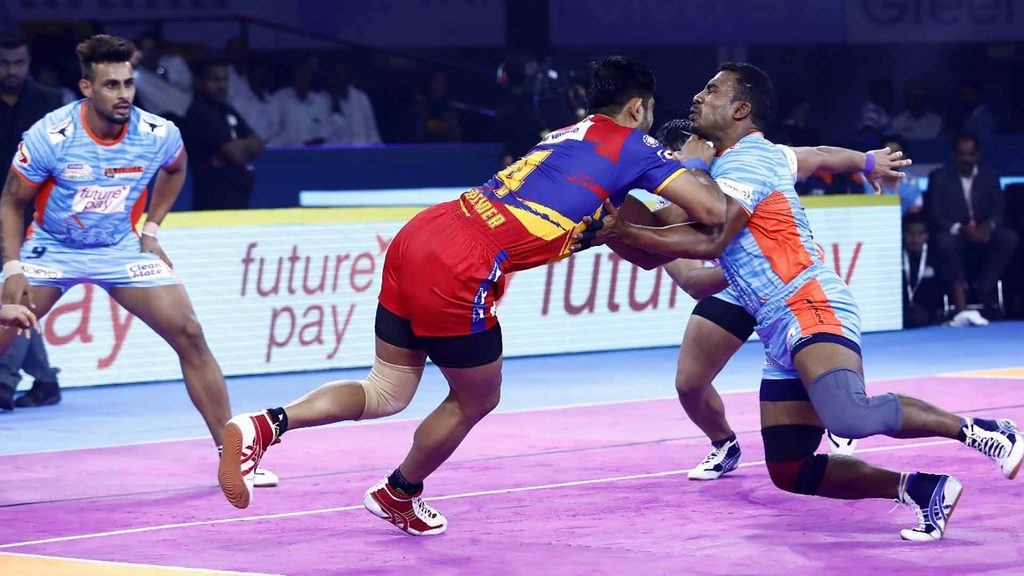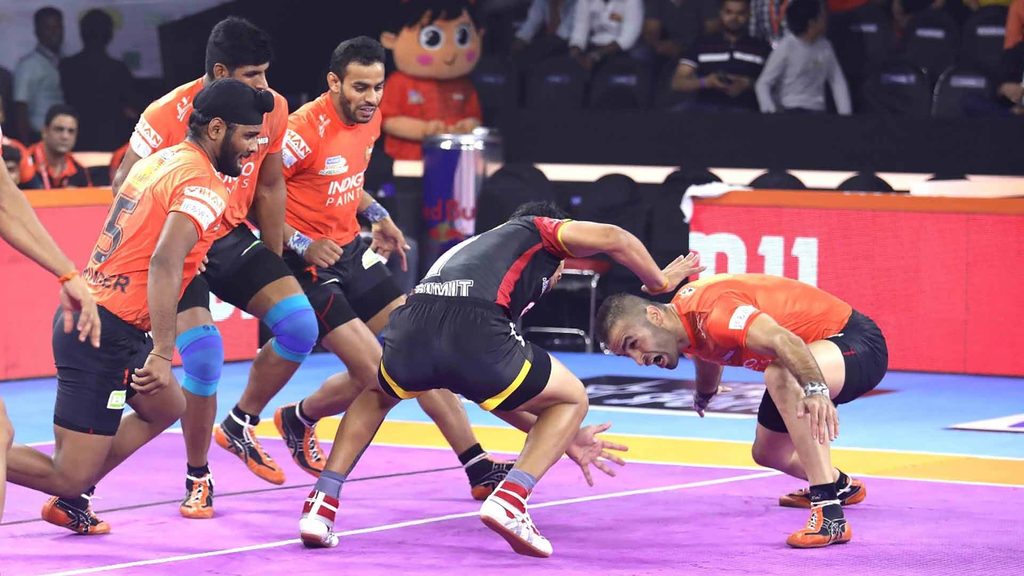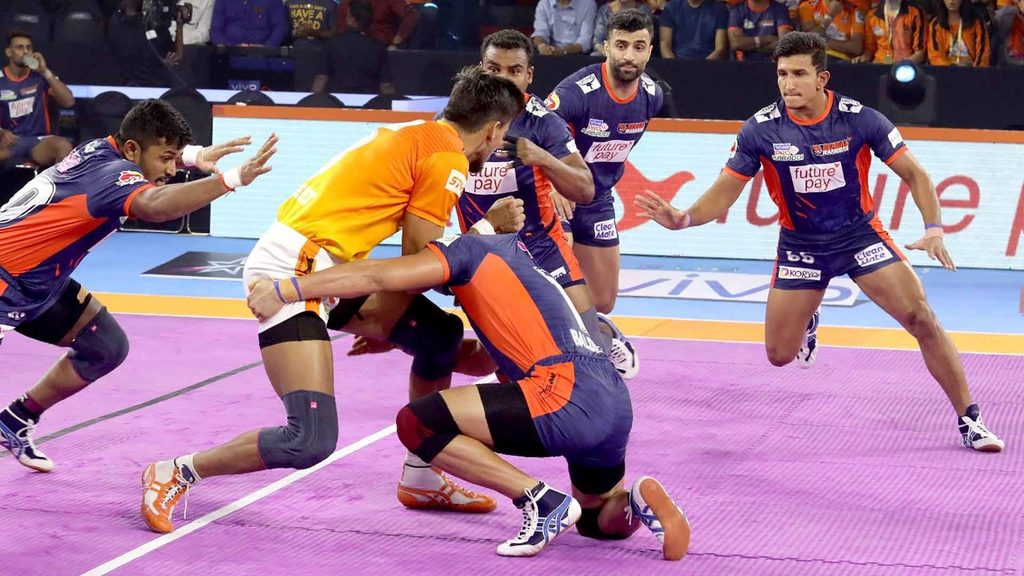Block: An intricate play of brute strength and meticulous timing

The ability to stand your ground and deny the raider an escape route to the midline is one of the essential building blocks for any aspiring defender in kabaddi. Blocking a raider with momentum on his side after he has obtained a touch isn’t just one of the most physically demanding manoeuvres, but also a test of timing and will between two individuals with contrasting goals.

Defenders using their arms and strength to push a raider back from the midline is common whether in the form of a chain or as an individual. However, to say that a Block is purely an exhibition of brute force would do a disservice to a move that combines technique and timing. Minor intricacies such as how defenders plant their feet before executing a Block often go unnoticed but are of no less importance.
A game of timing
“At first, I had some trouble getting the form right and it took some effort to develop the skill,” Bengal Warriors’ Baldev Singh told prokabaddi.com. “But after training and practising the Block, I was able to develop consistency in performing it over the course of our two-month training camp.”
Interestingly, and perhaps revealingly, strength wasn’t the first thing Baldev highlighted as one of the most important aspects behind a perfectly executed Block.
“The one thing that matters quite a lot while you perform the Block is speed. It’s all about reading the raider’s mind and understanding their weak points,” he said.

Baldev’s thoughts were almost mirrored by U Mumba’s skipper ‘Sultan’ Fazel Atrachali.
“What’s very important during a Block is your power and timing when the raider is coming towards you,” Atrachali explained, “Because if your timing, especially, is good then the raider cannot perform a Dubki or some other manoeuvre to escape. During practice, I like to go for Blocks all the time. It doesn’t matter if I’m successful or not, but I attempt it around about 50-60 times.”
Repetition, of course, remains and always will be a tried and tested method of success however, Baldev had more to offer.
“Of course, we persistently practice the Block in training till we get our timing and form right. But we spend the rest of our time at the gym doing power workouts and pumping iron to strengthen ourselves. For the Block, particularly, you need to work more towards improving your arm and shoulder muscles. When I’m in the gym, my workouts are mainly scheduled around training those muscles,” Baldev revealed.
Crucial element of surprise

The Bengal Warriors defender went on to explain how to take the raider by surprise before his peripheral vision warns him otherwise.
“I first look at what side of the defence a raider begins to observe, followed by his movement. If he begins to get in deep into enemy territory, then that is my signal to get in there and Block him. I mainly move in for the tackle only when a raider fumbles his vision for even a second.”
Hence, the element of surprise is also crucial after baiting raiders deep into your half with a deep defensive line. Then timing becomes integral, since catching the raider unawares is almost as demoralising to the struggling raider as the defender’s strength. If executed successfully, the Block can certainly make a raider think multiple times before attempting to venture deep in search of a point again.
Related tags:
Latest Updates
- © Pro Kabaddi
- Terms & Conditions
- Privacy Policy
- Cookie Policy
Powered by: Sportz Interactive
